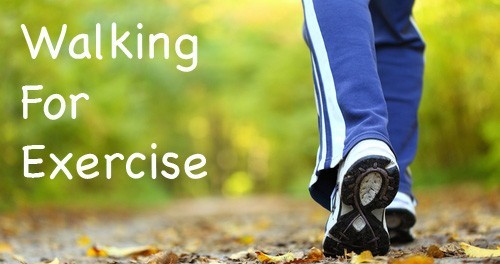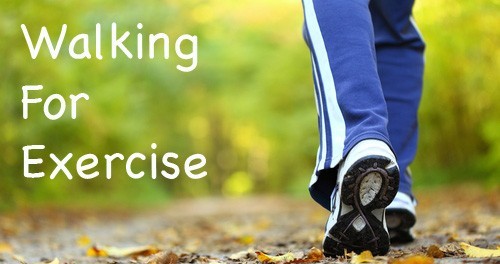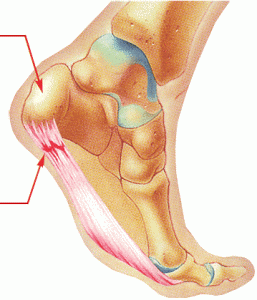Walk Talk Series
Day 45 – Heel Pain and Sensitivity
Being Sensitive
For those who aren’t dieting and exercising, just the fact that you are makes them feel guilty. Be sensitive to that. You are already a role model just by doing as you are doing. Don’t bring up the subject with others, wait for them to ask or comment
 Today’s Walk Fat-Burning Walk:
Today’s Walk Fat-Burning Walk:
- 40-75 minute walk in the fat-burning zone at 60-70% of your maximum heart rate
- Warm up with 5 minutes at a very easy pace
- Find a safe spot with a wall or pole to do a 5 minute easy stretching routine
- Now resume your walk at a comfortable pace
- End with 5 minutes of gentle stretching.
Advanced walkers: Threshold Walk
Exercise: Total body exercises
If the bottom of your foot screams in pain when you first step out of bed in the morning or after sitting for awhile, you have the chief symptom of plantar fasciitis or heel spur. This is a painful ailment is an injury to the bottom of the foot that takes weeks to heal. There are things you can do to help with the healing, and help prevent it (like retiring those old shoes!)
What is Plantar Fasciitis and Heel Spur?
Plantar fasciitis is inflammation of the plantar fascia. The plantar fascia is a thick band of tissue attached to the heel bone that supports the arch of the foot. It is caused by wounding the tough fascia connective tissue on the bottom of your foot. The band runs from your heel to the ball of your foot. It supports your arch and it transmits your weight across the bottom of the foot with each step you take. If the plantar fascia gets bruised or over-stretched, the inflammation causes the heel and foot pain. It can also get partially detached from the heel and a calcium deposit can form – a heel spur.
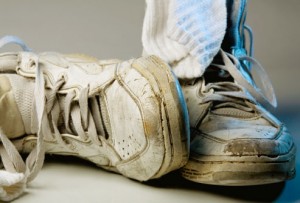 Causes
Causes
1. Over-pronation: Excessive rolling of your foot and ankle with each step. This can be corrected by wearing motion control running shoes or orthotics.
2. Wearing old shoes: Shoes lose their support and cushioning after 500 miles. If your shoes are a year old and you wear them regularly, they are dead. Get rid of them or you risk injury.
3. Over-striding: taking too long of step in front of your body can also contribute to tight calves and plantar fasciitis.
Treatment
1. Rest: Once you have plantar fasciitis, you should back off of your walking distance and not walk or run through the pain.
2. Icing: Use an ice pack on the foot for 15 minutes after walking.
3. Self-Massage: Massage the foot before getting out of bed in the morning. Use long strokes from the ball down to the heel.
4. Night splint: This device holds your foot flexed at night so that the plantar fascia doesn’t tighten up and cause that horrible pain as you stretch it first thing in the morning, which can in fact re-injure it.
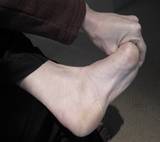 How to Stretch for Plantar Fasciitis
How to Stretch for Plantar Fasciitis
Plantar Fascia Stretch: For those with heel pain and plantar fasciitis – once your pain and swelling have begun to subside, perform this static stretch three times a day. Continue to use this stretch to prevent recurrence of plantar fasciitis and heel spur.
1. Sit in a chair or the edge of a bed
2. Place palm of hand over the toes and ball of foot
3. Keeping the leg steady, pull the foot towards you so that the bottom of the foot is stretched. Hold this for 30 to 60 seconds and release
4. Repeat five times at each session. Recommended to do this session three times a day
5. Alternate 1: Sit with foot on opposite knee, grasp with opposite hand to pull it towards the knee and stretch the ball of the foot
6. Alternate 2: Use a towel, loop it around the ball of the foot and use it to pull your foot and stretch the ball of the foot.

